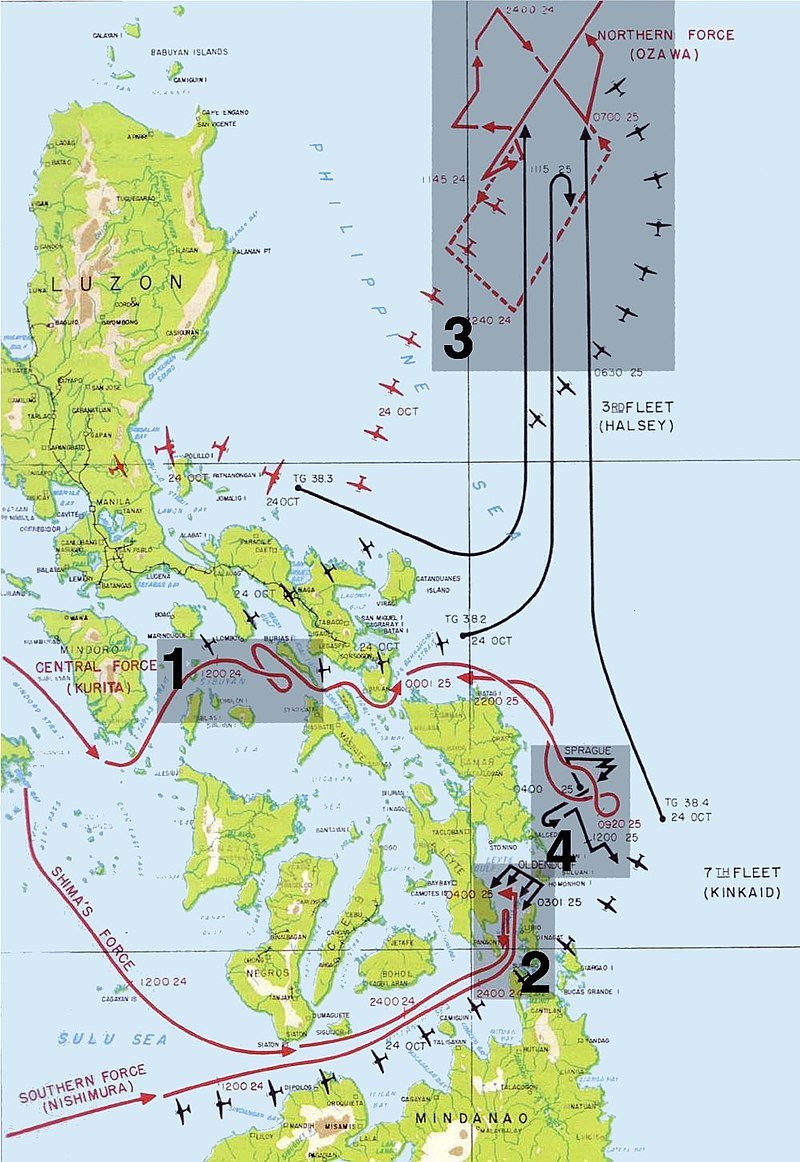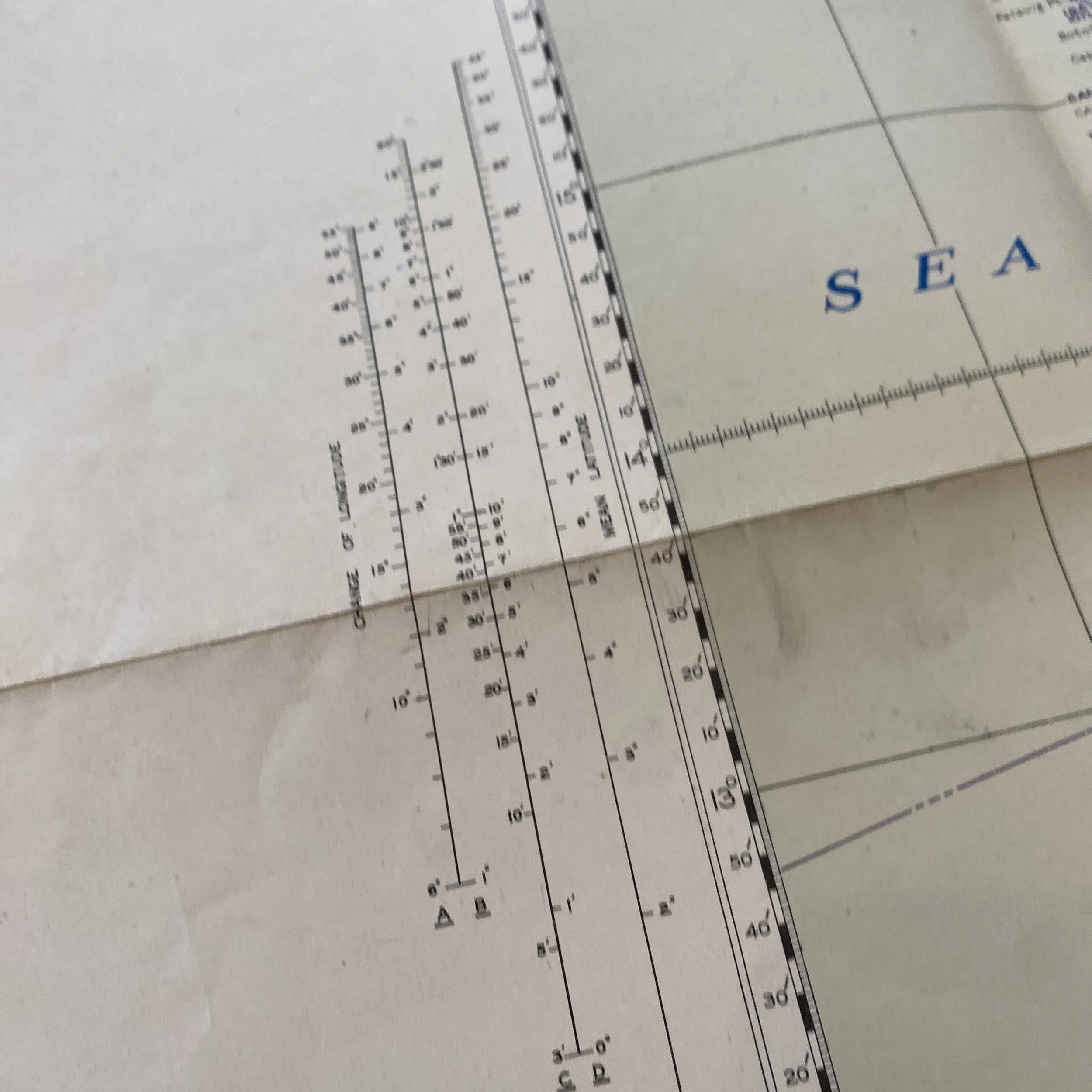RARE! 1944 WWII 5th Air Force Operation Musketeer Luzon Leyte Philippines Campaign Navigation Aerial Mission Map














































RARE! 1944 WWII 5th Air Force Operation Musketeer Luzon Leyte Philippines Campaign Navigation Aerial Mission Map
Comes with hand-signed C.O.A.
This incredibly rare and museum-grade WWII “Northern Philippines Navigation Chart” is dated August 1944 and was a very limited series print made directly for the 5th Air Force combat operations in the Pacific Theater from 1944-1945. The Fifth Air Force accomplishments by the end of World War II included 3,445 aerial victories and ten Medal of Honor recipients, two of whom were the highest-scoring aces in U.S. history, Maj Richard Bong (40 confirmed victories) and Maj Thomas McGuire (38 confirmed victories).
This combat aerial navigation chart was specifically used during the Philippines Campaign, Battle of the Philippines, Second Philippines Campaign, or the Liberation of the Philippines, codenamed Operation Musketeer I, II, and III, was the American, Mexican, Australian and Filipino campaign to defeat and expel the Imperial Japanese forces occupying the Philippines during World War II.
This map was used to navigate aerial combat missions by the U.S. 5th Air Force on mission targets surrounding LUZON, MINDORO, SAMAR, LEYTE, LEYTE GULF, and MINDANAO.
Fighter Groups:
8th FG (P-39) Townsville, Australia
35th FG (P-40) Port Moresby, New Guinea
49th FG (P-40) Darwin, Australia
Bomber Groups:
3rd BG (B-25, A-20, & A-24) Charters Towers, Australia
19th BG (Non-Operational. Battle scarred from Philippines & Java) Mareeba, Australia
22nd BG (B-26) Woodstock, Australia
38th BG (B-25) Charters Towers, Australia
43rd BG (B-17 until 1943; B-24 1943–1945) Port Moresby, New Guinea
Constituted as Philippine Department AF on 16 Aug 1941. Activated in the Philippines on 20 Sep 1941. Redesignated Far East AF in Oct 1941, and Fifth AF in Feb 1942. This air force lost most of its men and equipment in the defense of the Philippines after 7 Dec 1941. Later in Dec 1941 headquarters and some crews and planes moved to Australia, and in Jan 1942 they were sent to Java to help delay Japanese advances in the Netherlands Indies. The Fifth did not function as an air force for some time after Feb 1942 (the AAF organizations in the Southwest Pacific being under the control of American-British-Dutch-Australian Command and later Allied Air Forces). Headquarters was remanned in Sep 1942 and assumed control of AAF organizations in Australia and New Guinea. The Fifth participated in operations that stopped the Japanese drive in Papua, recovered New Guinea, neutralized islands in the Bismarck Archipelago and the Netherlands East Indies, and liberated the Philippines. When the war ended in Aug 1945 elements of the Fifth were moving to the Ryukyus for the invasion of Japan.
Commands. V Bomber: 1941-1946. V Fighter: 1942-1946.
Stations. Nichols Field, Luzon, 20 Sep 1941; Darwin, Australia, Dec 1941; Java, Jan-Feb 1942; Brisbane, Australia, 3 Sep 1942; Nadzab, New Guinea, 15 Jun 1944; Owl, Schouten Islands, 10 Aug 1944; Leyte, c. 20 Nov 1944; Mindoro, Jan 1945; Clark Field, Luzon, Apr 1945; Okinawa, Jul 1945; Irumagawa, Japan, c. 25 Sep 1945; Tokyo, Japan, 13 Jan 1946; Nagoya, Japan, 20 May 1946; Seoul, Korea, 1 Dec 1950; Taegu, Korea, 22 Dec 1950; Seoul, Korea, 15 Jun 1951; Osan-Ni, Korea, 25 Jan 1954; Nagoya, Japan, 1 Sep 1954-.
Commanders. Brig Gen Henry B Clagett, 20 Sep 1941; Maj Gen Lewis H Brereton, Oct 1941-Feb 1942; Lt Gen George C Kenney, 3 Sep 1942; Lt Gen Ennis C Whitehead, 15 Jun 1944; Maj Gen Kenneth B Wolfe, 4 Oct 1945; Maj Gen Thomas D White, 16 Jan 1948; Lt Gen Earle E Partridge, 6 Oct 1948; Maj Gen Edward J Timberlake, 21 May 1951; Maj Gen Frank F Everest, 1 Jun 1951; Lt Gen Glenn O Barcus, 30 May 1952; Lt Gen Samuel E Anderson, 31 May 1953; Lt Gen Roger M Ramey, 1 Jun 1954-.
Campaigns. World War II: Philippine Islands; East Indies; Air Offensive, Japan; China Defensive; Papua; New Guinea; Northern Solomons; Bismarck Archipelago; Western Pacific; Leyte; Luzon; Southern Philippines; China Offensive. Korean War: UN Defensive; UN Offensive; CCF Intervention; 1st UN Counteroffensive; CCF Spring Offensive; UN Summer-Fall Offensive; Second Korean Winter; Korea Summer-Fall, 1952; Third Korean Winter; Korea Summer-Fall, 1953-
Decorations. Distinguished Unit Citations: Philippine Islands, 8-22 Dec 1941; Philippine Islands, 7 Dec 1941-10 May 1942; Papua, [Sep] 1942-23 Jan 1943. Philippine Presidential Unit Citation.